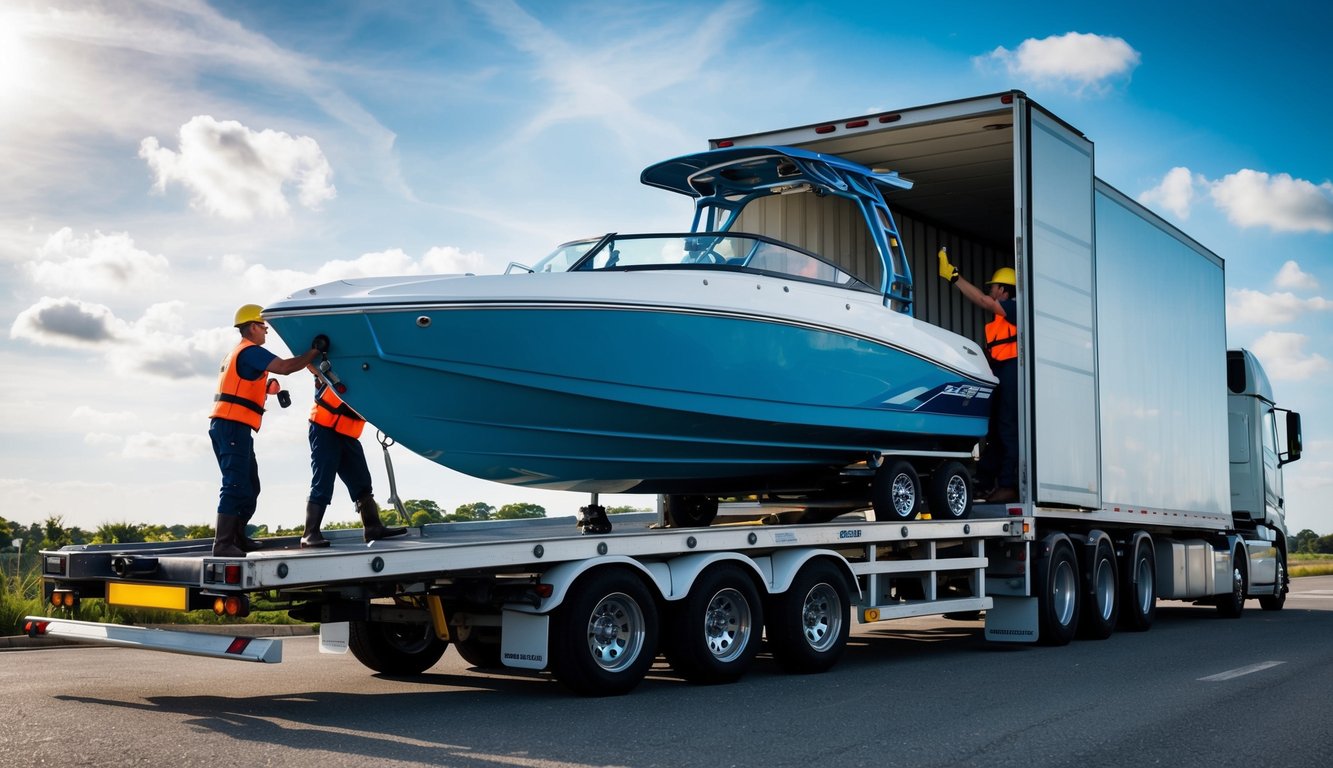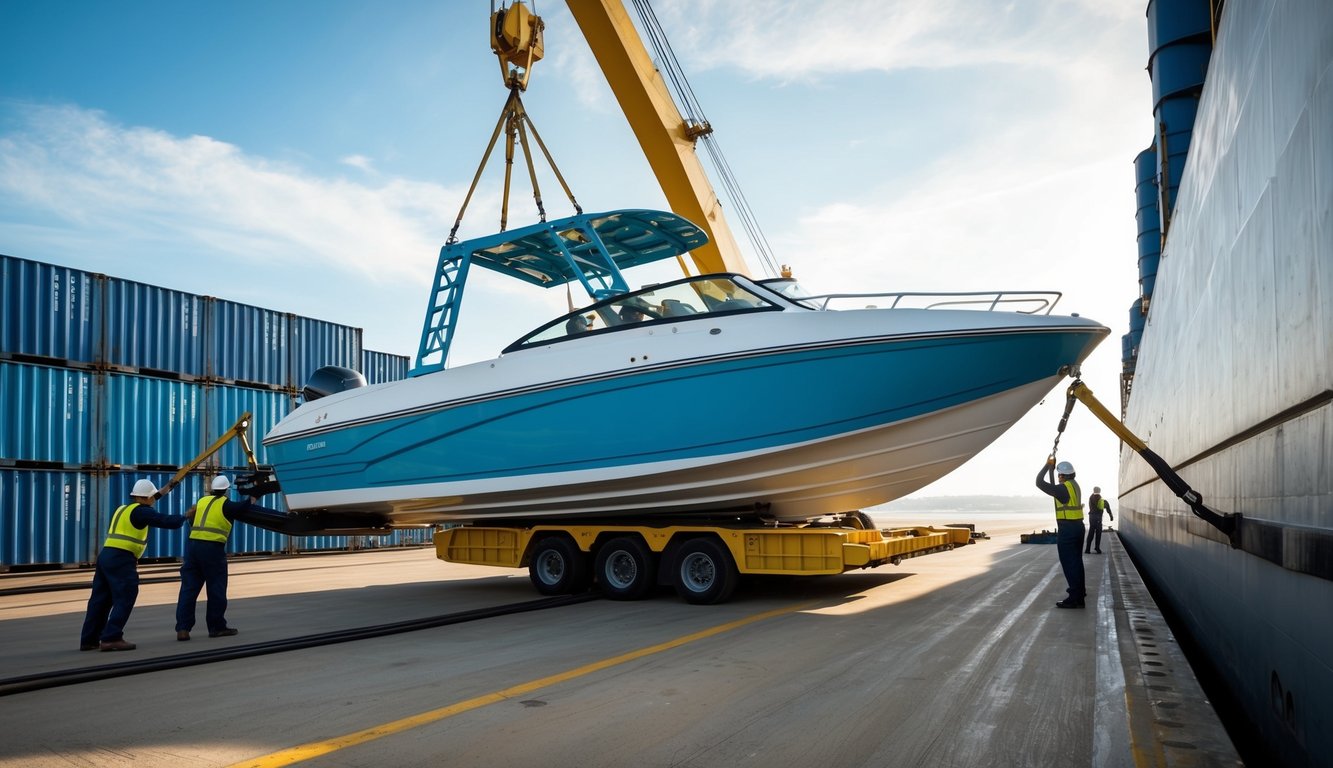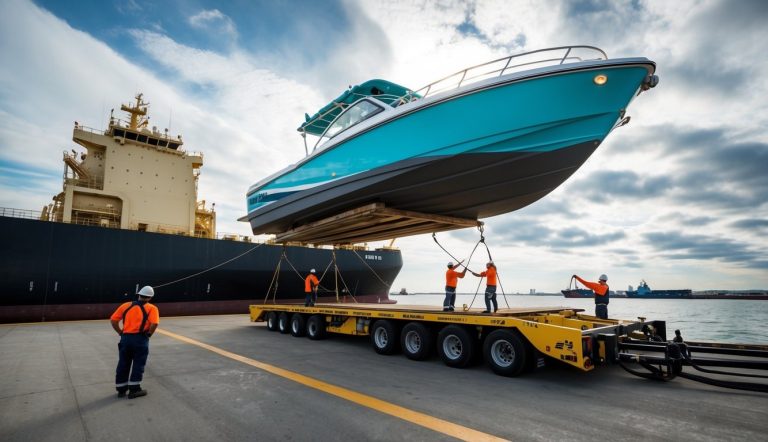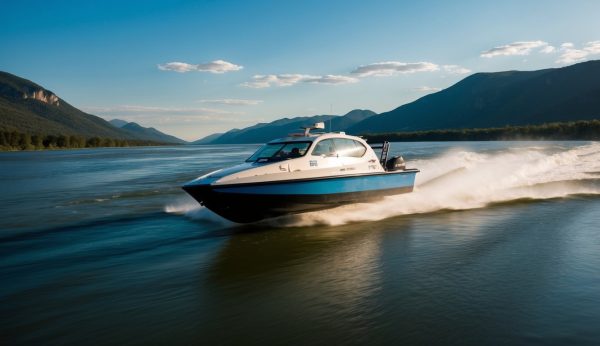Understanding Shipping Costs for Jet Boats
Transporting a jet boat requires careful planning and budgeting. Shipping costs typically range from $1.00 to $1.50 per mile, though this can vary based on several factors that you should consider before booking transportation.
Factors Influencing Jet Boat Shipping Costs
- Size and Weight: Larger, heavier jet boats cost more to transport due to increased fuel consumption and specialized equipment requirements.
- Distance: The farther your jet boat needs to travel, the higher the cost. Cross-country shipping can reach up to $3.67 per mile in some cases.
- Trailer Status: Having your own trailer can reduce costs significantly. Trailered boats cost an average of $2,102 to ship within the U.S., while non-trailered boats average $1,151.
- Season: Peak boating seasons (spring and summer) typically have higher shipping rates due to increased demand.
- International Considerations: For overseas shipping, you’ll encounter additional costs like CIF (Cost, Insurance, and Freight) charges and import tariffs that vary by country.
- Accessibility: Pickup and delivery locations with difficult access may incur additional fees.
Benefits of Professional Jet Boat Transportation
- Equipment Protection: Professional transporters use specialized equipment to prevent damage during transit. Nationwide Boat Shipping and similar services offer premium protection for your investment.
- Insurance Coverage: Reputable shipping companies provide comprehensive insurance, protecting you from financial loss if damage occurs.
- Time Savings: You save significant time by not having to transport the boat yourself, especially for long distances where a DIY approach could take days.
- Proper Documentation: Professional services handle all necessary paperwork, including permits for oversized loads and customs documentation for international shipping.
- Route Planning: Experienced transporters know the best routes to avoid low bridges, narrow roads, and other obstacles that could damage your jet boat.
Shipping Methods for Jet Boats

Moving your jet boat from one location to another requires choosing the right shipping method based on distance, budget, and timeline. Each transportation option offers different benefits and considerations for your specific situation.
Overland Transport Options
Trailer Transport is the most common method for shipping jet boats. You can either tow the boat yourself using your vehicle or hire a professional transportation company. Professional services typically charge between $1.00 to $1.50 per mile, though rates can reach up to $3.67 per mile during peak seasons.
Flatbed Trucks provide another solution for larger jet boats that exceed standard trailer dimensions. These specialized carriers include equipment for safe loading and unloading.
Hot Shot Services offer expedited overland transport for urgent deliveries. While more expensive, they provide faster delivery times and often include door-to-dock service.
When comparing overland options, consider:
- Insurance coverage
- Delivery timeframe
- Route restrictions
- Loading/unloading assistance
Marine Shipping Solutions
Container Shipping provides secure transport for your jet boat across oceans. Your boat is loaded into a standard shipping container, offering protection from elements during transit. This method works well for smaller jet boats that fit standard container dimensions.
Roll-on/Roll-off (RoRo) services allow your jet boat to be driven onto specialized vessels. This option is generally more affordable than container shipping for larger boats. CIF (Cost, Insurance, Freight) terms often apply, meaning the seller covers costs until the boat reaches the destination port.
Lift-on/Lift-off (LoLo) involves cranes loading your boat onto cargo ships. This method works for boats of various sizes but requires professional handling equipment.
When shipping internationally, prepare for:
- Customs documentation
- Import duties
- Quarantine inspections
- Port handling fees
Air Freight Possibilities
Air Freight represents the fastest but most expensive shipping method for jet boats. This option typically costs 5-6 times more than sea shipping but delivers in days rather than weeks.
Jet boats shipped by air must be properly prepared with:
- Fuel tanks drained and purged
- Batteries disconnected
- Hazardous materials removed
- Custom crating for protection
Charter Planes offer a solution for extra-large or unusual-sized jet boats that standard cargo planes cannot accommodate. These specialized services provide tailored solutions but come at premium prices.
Consolidated Air Shipping combines your jet boat with other cargo to reduce costs. While more affordable than exclusive air freight, it may extend delivery times due to scheduling and route planning for multiple items. Consider air freight when speed is crucial or when shipping to inland destinations without easy sea access.
Cost Calculation Factors

Shipping a jet boat involves several key pricing elements that directly impact your final quote. Understanding these factors helps you budget accurately and avoid surprises when transporting your watercraft.
Distance and Route Considerations
- The cost of shipping your boat primarily depends on distance. Most transport companies charge between $1.00 to $1.50 per mile, though prices can rise to $3.67 per mile in some cases. Longer distances typically result in lower per-mile rates, while shorter routes command premium pricing.
- Route accessibility significantly affects your shipping cost. Urban locations with easy highway access are more affordable than remote destinations. Rural areas or locations with limited access often incur additional surcharges.
- Seasonal factors also impact pricing. Summer months (May-September) typically see higher rates due to increased demand. Winter shipping in northern regions may include weather-related surcharges due to challenging road conditions.
- Cross-country routes (like East Coast to West Coast) typically range from $2,000-$4,500 depending on your specific boat and requirements.
Weight, Size, and Speed Parameters
Your jet boat’s dimensions directly impact shipping costs. Transporters calculate fees based on:
- Length: Longer boats require specialized equipment
- Width: Oversized widths may need permits and escort vehicles
- Height: Tall boats require special clearance considerations
- Weight: Heavier vessels need reinforced trailers and powerful trucks
Total volume calculations (length × width × height) are often used for enclosed transport options. Most jet boats fall in the 16-24 foot range, typically costing $1.50-$2.50 per mile for standard open transport. High-performance jet boats with exceptional speed capabilities may require special handling and securing methods, potentially increasing your costs by 15-25%. Boats with sensitive components or custom paint jobs often need covered transport, which adds $0.50-$0.75 per mile to your rate.
Insurance and Additional Services
Proper insurance coverage is essential when shipping your jet boat. Most transport companies offer basic insurance (typically up to $100,000), but this may not fully cover high-value vessels. Additional coverage usually costs 1-2% of your declared boat value.
Common additional services include:
| Service | Typical Cost | Purpose |
|---|---|---|
| Shrink wrapping | $12-$20 per foot | Protects against road debris |
| Loading/unloading | $100-$300 | For boats without trailers |
| Rush delivery | +25-40% | Expedited shipping |
| Storage | $25-$50 per day | Temporary holding |
Professional preparation services might be necessary depending on your boat’s condition. These include securing loose items, removing valuable electronics, and properly winterizing when applicable. You should also consider Cost, Insurance, and Freight (CIF) charges for international transport, which bundle shipping costs with insurance and customs fees into one comprehensive price.




